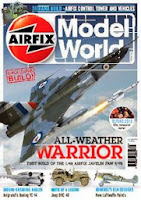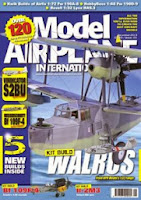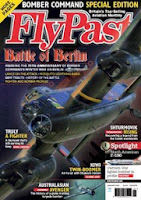Thursday, December 5, 2013
Flight Journal 02/2014
By the time I graduated from high school in Oklahoma during 1940 at the ripe old age of 19, I could see that the United States was going to get dragged into a world war. I had grown up in a farming family during the Great Depression and had felt the terrible hardships it caused us firsthand. The effects of the economic devastation continued to linger throughout our state. Finding a good paying job, or any pay, was like trying to find fertile soil in the ravaged Dust Bowl. I tried to join the Army at Fort Sill and asked about becoming a pilot. A lieutenant with a very sharp tongue shot me down right away. "Sonny boy," he said, "You got to get yourself two years of college first, and then maybe we will talk to you." I was depressed as the red clay soil under my feet but was determined to earn my wings. I moved to Wyoming, found work, and enrolled in the Civilian Pilot Training Program (CPTP) and earned a private pilot's license in a 50-horsepower Piper Cub with no brakes and a tail skid. A week later, the Japanese bombed Pearl Harbor and I got the impression from the Army recruiter I visited that if a fellow could see lightning and hear thunder then they would gladly take me!
Combat Aircraft Monthly 01/2014
GEN T. Michael 'Buzz' Moseley, the former US Air Force chief of staff, wasn't shy in pushing to renew his fighter aircraft fleet back in 2007 when he was the boss. Moseley always wanted 381 Raptors, plus 1,763 F-35As as quickly as possible to replace his F-16 fleet. He was, however, sharply criticized for being overly supportive of fighters, and less so of intelligence, surveillance and reconnaissance (ISR) and unmanned platforms, for example. While the headlines for Moseley's fifth-generation fighters are signature reduction and the ability to operate 24 hours a day in an integrated air defense system, they also offer a high degree of versatility. They can tackle many missions, including those not traditionally associated with 'fighters' — melding data, they can act as stealthy command hubs if required. The problem is that the USAF's drive for an all-stealthy fighter fleet comes at a price. When the F-35A was conceived as an affordable, stealthy, lightweight F-16 replacement, few could have questioned the logic of procuring them on a large scale.
Military Machines International 01/2014
I have been editing Military Machines International for just over thirteen years and while I regularly receive feedback from readers regarding the magazine's content, I was genuinely both shocked and amazed at the amount of correspondence I received regarding the article 'Those Were The Days' in the November issue in which I took a retrospective look back at how the Tank Museum has played a part in my life. If I had known that photos of myself in short trousers and NHS glasses was going to provoke such interest I would have done it earlier, however, it does seem that the national treasure that is the Tank Museum has played a key role in the lives of a great many MMI readers too, and it is the memories of those visits to the museum over the years that generated the real interest. Since it was first founded the museum has evolved into a bigger and better museum fit for the 21st Century, and we can only hope that generations to come continue to enjoy this and other similar museums for many years to come. Next year will see the commemoration of the 100th Anniversary of the start of World War One and the 70th Anniversary of the D-Day Landings, and no doubt many museums and historic military vehicles will be involved in those commemorations and I for one hope that our children and grandchildren and even their children will be able to commemorate the sacrifices made on our behalf for many more years to come with the aid of historic vehicle collections such as that housed at the Tank Museum-Ed.
Airfix Model World 01/2014
So, how was it for you? Did you blow your budget or show some financial restraint? Did you find plenty of bargains? Questions like these are all too common when chatting on the telephone or via email to my modelling colleagues at the moment. As I sit here and look at the carrier bags filled with 'stuff' that I purchased at IPMS Scale Model World, I'm asking myself 'will the Christmas break be long enough?' Of course it won't be. There's a modelling project to finish off from last year and a pile of books I'm keen to read. Those are planned for a very, very lazy afternoon shortly after Boxing Day, with a big mug of tea, a comfy chair and a Cold War reconnaissance mission along Russia's border region during the 1950s - all from the comfort of a study on the South Coast of England. This of course will lead to the inevitable inspiration, and diversion, to mull over other potential modelling projects - an early model Lockheed U-2 or an RB-74H Stratojet, or one of my favourite series of aircraft, the RC/EC-135s.
Model Airplane International 12/2013
Initially you might think it's a bit unfair to compare the two kits because the Eduard 1:48 Dora is so much more expensive. This isn't the case in reality, however, because Eduard do a very smart thing indeed by producing the 'Weekend Edition' version for the princely sum of just £12.80! With that in mind, let's look at the newcomer from the Far East. It comes in the HobbyBoss standard small box that is sturdy and covered in some decent art. The sprues inside are very cleanly moulded in light grey plastic, without a hint of flash and only tiny mould lines. The transparent parts are very clear as always, and you get a single tiny etched fret with just four parts on it but no seat belts. The sprue breakdown is typical of mouldings where multiple versions of things are going to be made so look out for more in this family soon. You also get two sprues of weapons and tanks, including the under-wing ETC50 racks for the 50kg bombs. The instruction sheet is brilliantly drawn, as all HobbyBoss sheets have been, and you get two versions on the decal sheet and full colour, four-view painting guides.
Air International 12/2013
The SR-71 Blackbird is an aviation icon. The Mach 3-capable reconnaissance aircraft set speed and altitude records that still stand. During one 1974 flight, a Blackbird flew from New York to London in less than two hours and, in 1976, another travelled from London to Los Angeles in under four. Now, 15 years after the Blackbird's last flight at the end of its five-year reactivation in the 1990s, Lockheed Martin's famous Skunk Works division has revealed that it's working on a successor - the SR-72. This unmanned aircraft will travel at hypersonic speeds, cruising at Mach 6 - six times the speed of sound (around 3,600mph or 5,800km/h), twice as fast as the Blackbird. Artists' impressions reveal a striking platform of sharply swept-back delta wings blended into a hump-backed fuselage. The high-altitude reconnaissance role formerly provided by the Blackbird is now undertaken by unmanned systems and satellites. But the former have speed limitations and the latter are governed by the laws of orbital mechanics. The Blackbird was not similarly encumbered. Its speed and altitude capabilities meant it could fly whenever, wherever - giving the United States a very flexible intelligence, surveillance and reconnaissance (ISR) platform.
FlyPast 01/2014
Like many successful businessmen, New Zealander John Luff had to wait until later in life to have the time to follow his passion. He is now very probably the newest-rated pilot on the de Havilland Venom. A handful of the twin-boom jet fighters are still flying and Johns is the only example active in the southern hemisphere. The last air force to operate the Venom, the Swiss Flugwaffe, officially retired the type in October 1983 and in June the following year large numbers of them were offered to museums and private owners. Johns Venom had been licence-built in Switzerland in 1956 as reconnaissance-configured FB. 1R J-1630. Acquired by a Swiss-based group and registered as HB-RVA, it took to the air as a civilian in 1988. Although it had not flown for several years, when John inspected it in 2012 it was in good condition. John had it shipped out to New Zealand, much to the surprise of 'Kiwi' warbird fans who spotted the jet arriving at Ardmore, near Auckland. As with most projects, there were some setbacks to be resolved before it could fly. One of the main issues was the undercarriage, which required a total rebuild. Fortunately, the aircraft was in the capable hands of engineer Gerry Gaston who worked on similar RNZAF DH Vampires in the 1960s. Like the Vampire, the Venoms fuselage pod' is made of wood and plywood, in a similar manner to the Mosquito's.
Subscribe to:
Comments (Atom)






